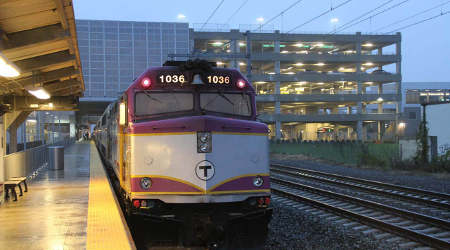Rhode Island officials need more residents to commute to work by railroad, so much so they are going to pay for free rides.
Ridership has been particularly low at Wickford Junction. The channel, which opened in 2012, picks up about 300 riders per day — a far cry from a 1995 projection of almost 3,400 daily riders. Ridership numbers “are lower than we would like them to be.”
So in a bid to cultivate ridership, Rhode Island will pay for costs for any travel within the country. And travel from these two channels into Massachusetts will only be the cost of a ticket from Providence.
Rhode Island will cover the T $102,000 for the program, or $17,000 per month, a sum that covers the MBTA’s average Rhode Island fare revenue.”We’re trying to improve the ridership and overall awareness of the service,” St. Martin said. “We are finding that in general, transit use in Rhode Island is reduced. We’ve got a car culture here in Rhode Island. So it is a matter of making people aware of the chance for an easy ride to work.”
Rhode Island has an incentive to cultivate ridership. Because of this, getting ridership up reduces the state’s share of the price tag. Paying for free rides today, he said, could lead to more paying clients later on. “It is an investment in an attempt to get more riders,” he said.
US Representative Michael Capuano had a similar concept when he used $53,000 in campaign funds to sponsor free support along the Fairmount Line in Boston for a couple of weeks in May.
According to the MBTA, ridership online increased by 25 percent the first week of support and 44 percent in the next week, but returned to the identical ridership levels when the free ride was over.
London firm hired to examine North-South railroad link
The company hired to make sense of this North-South Rail Link already has a list of working on complex and expensive projects with state officials.The state Department of Transportation has exploited the US office of London-based design consultancy Arup to examine the rail link, an ambitious proposal to place a new tunnel under Boston and join the commuter rail lines north and south of town. Arup has been awarded the $1.5 million contract on June 30, after officials began soliciting bids for the analysis earlier this season.Arup is recognizable to state transportation officials.
In 2015, they tasked with the firm with finding ways to trim costs on the Green Line extension to Medford then job’s costs were found to be far over budget. The business is still involved with the Green Line expansion, providing design services to the nation.Arup has also worked on many notable non-transportation jobs in Boston, such as the Bruce C. Bolling Municipal Center, the Institute of Contemporary Art, the Isabella Stewart Gardner Museum, and many local college buildings, such as MIT’s Brain and Cognitive Sciences Complex.The suggestion to connect North and South channels has been on the wish list of a few transit activists which was once tied into the Big Dig highway project, although some consider it an unnecessary and fanciful thought.
Another study of this project was shelved over a decade ago by then-governor Mitt Romney.However, the rail link has witnessed new support lately, following former governors Michael Dukakis and William Weld publicly called on Governor Charlie Baker to support the program, arguing it’s a far better alternative to enlarging South Station to make way for more trains. The idea has also won the support of many members of the state’s congressional delegation.
Supporters argue the job would provide commuters with new home and work opportunities on opposite ends of town, lower congestion in North and South stations, and help address train storage difficulties.Transportation Secretary Stephanie Pollack has said the study “will help determine whether further financial and technical analysis for the project is justified.” It’s expected to be finished by next spring.In a meeting, Dukakis said Arup “has a fine reputation and we are excited about working with them” He hopes that the study will consider more than just prices and ridership, also focusing on economic growth and labor mobility.
